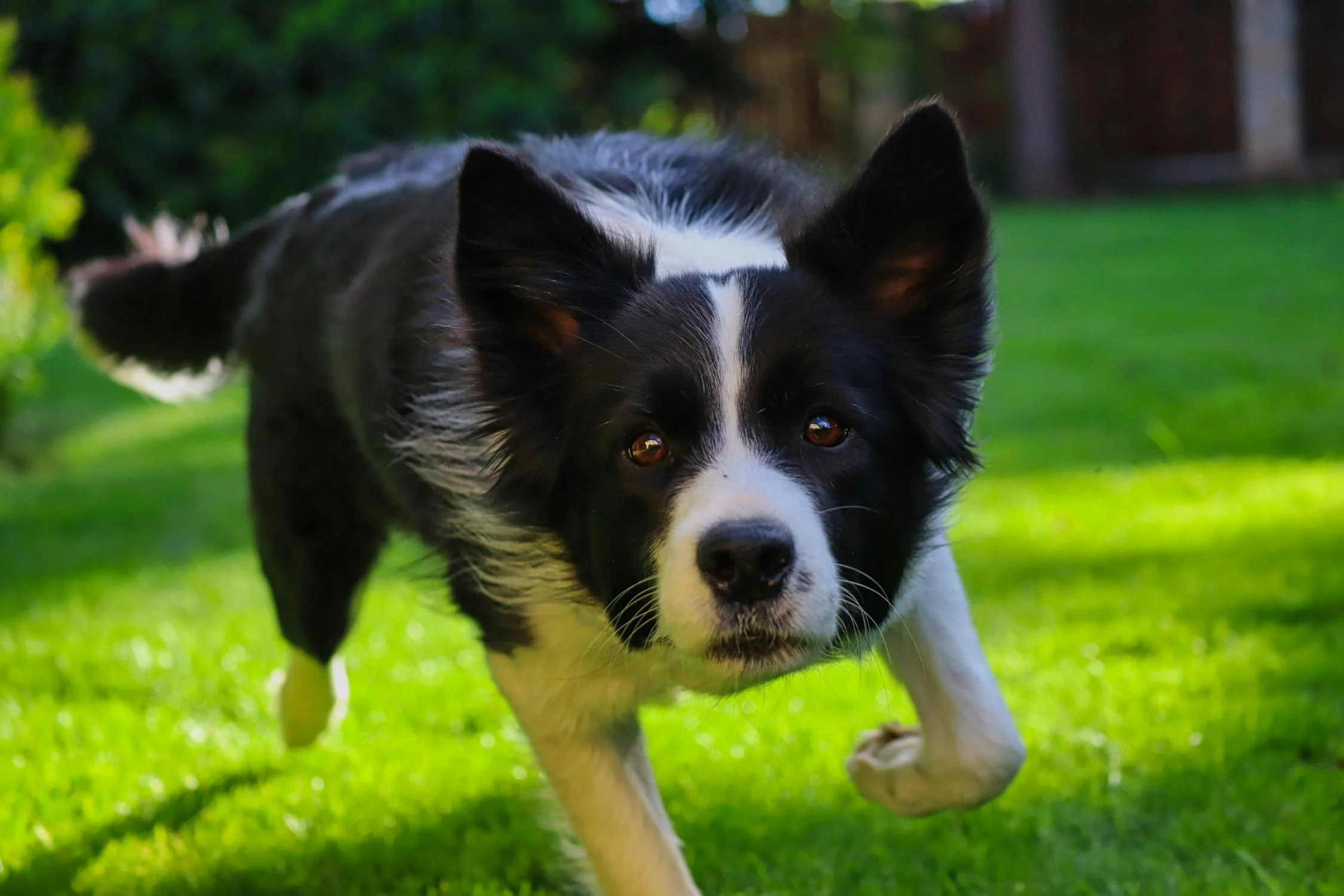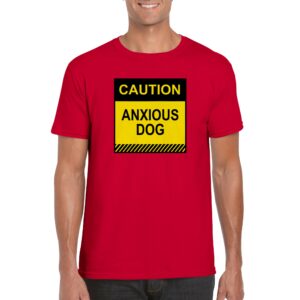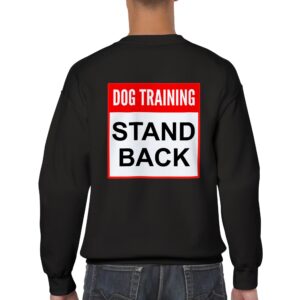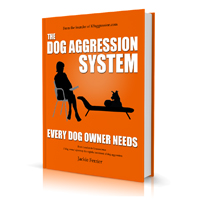Your cart is currently empty!
Why is my dog acting like that?

In many cases we intuitively understand why our dog acts the way they do. They’re hungry, and stranger has come to the door, they want attention, they want outside and so on. But in the case of behavior problems, particularly behavior that doesn’t feel comfortable to us, it may be a little more tricky.
Dogs can give us mixed signals. We usually know when they’re happy, but sometimes we just can’t read if our dog actually is. Often dogs that are behaving intensely can make us worry. A strange dog that might run at us when we appraoch, an intense stare, an unexpected growl or snap. Aggressive or agonistic behavior in particular can be puzzling when we know (or we think we know) there really isn’t a threat.
We tend to lump unfriendly behaviors like aggression, barking, lunging, biting, etc. all into one aggression category that is on a progression scale towards harm. This can distract us because we try to make sense of why it happened. Instead we should be looking at some behaviors like barking, growling, baring teeth, etc. as modes of communication. Your dog is letting those around them know, they don’t like what is going on, or they are worried, irritated or frustarted.
Barking
Dogs bark for a number of different reasons, but the barking that feels aggressive can be combined with a certain amount of fear or alarm. Not only does it communicate to the threat that the dog is concerned, but much like shouting for help, barking is loud and can be used to let other trusted people or dogs know there’s a problem.
Growling
Growling, on the other hand tend is very directed and usually occurs at a close proximity to the person or animal it’s targeting. In some cases dog simply issue warning growls, much like the way we tell someone to stop irritating us.
More serious threatening growling specifically communicates that the dog is feeling threatened on some level and communicates to the other to stop what they are doing and back off. Usually this is combined with other body language particularly avoidant or stiff body language. But in some cases there have been proactive signalling where the dog has actively communicated tey don’t like what is going on.
This is why trying to punish or otherwise inhibit a dog from growling is a mistake. A growling dog has not yet made a mistake no matter how rude or inappropriate we might feel the behavior is. In many cases the dog has already been communicating he or she was uncomfortable before the growling started and we just missed it.
Lunging
Lunging either occurs when the dog is intent to arrack, but more often occurs when the dog is feeling trapped. A dog is more likely to lunge while on a leash for example. It is an action designed to be threatening to the other.
In other cases some dogs will make a run at someone else as a way to scare them off or perhaps provoking the person or strange dog into revealing whether they are someone the dog has to worry about.
Biting
Biting usually occurs when these communications signals fail. When there is a pattern of repeatedly ignoring communication like growling (or the dog is punished for growling), they skip the ritualized communication and just progress straight to biting.
In some cases there is a pathology. The warning signals don’t occur when they should or occur in obviously nonthreatening situations.
Getting to the Source of the Problem
There are good reasons to discover what is causing your dog to behave intensely, reactive and even aggressively. But more often than not, we attribute what we think is going on rather than what is actually going on. More valuable is to note patterns that occur just before your dog reacts.
This allows us to predict when the behavior might happen so that it’s easier to keep others around you safer. It can also allow us to consider whether there is soomething about the situation that is troubling for our dog. The knowledge that your dog reacts intensely when people come into the house allows you to handle the situation differently. For example, you can put your dog into another room.
We often want to know why our dog acts the way they do, in part because if we can understand it, we can make sense of it. Unfortunately this can lead us to minimizing the circumstances.
It makes more sense to be as objective as possible about all the circumstances in which aggressive or reactive behavior has occurs in the past. Whatever is happening in the environment most certainly plays a role.
Without identifying the triggers of your dog’s aggression, you can’t do much to try to improve the behavior. Yet it’s possible to improve most aggressive behavior in dogs.
But along with being objective about the details of the circumstances around your dog’s aggression, we also have to understand there can be additional underlying issues contributing. Is your dog just intense and reactive or is behavior escalating? Is stress causing a change in your dog that can result in problems long term? Is a pathology developing?
Chronic stress has a direct relationship to anxiety which has a direct relationship to aggression. Consider your dog’s biological makeup and what is happening in your dog’s life. Anxiety, frustration or fear, pain or health problems may be underlying the aggressive behavior. Dog aggression can even be influenced by medication.
The best way to get an idea of the real reason your dog is acting like that is through consulting a veterinary behaviorist, and often your vet can consult with one on your behalf.
ADVERTISEMENT
The Dog Aggression System Every Dog Owner Needs E-book

Anxious Dog Shirts only available in our shop

Keep people away with our Stand back shirts
ADVERTISEMENT
ADVERTISEMENT
Tags:

